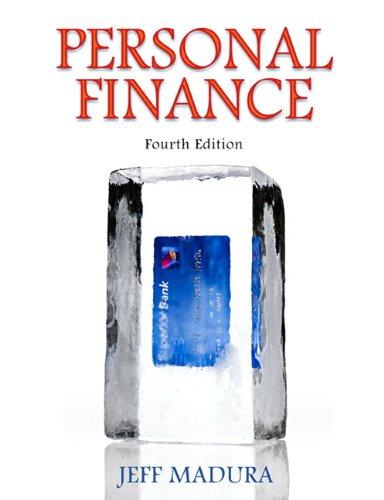Question
Exercise 3: Debt, WACC and Tax (25 marks) You are a finance manager for the US based company JKL Limited. The CFO of the company
Exercise 3: Debt, WACC and Tax (25 marks)
You are a finance manager for the US based company JKL Limited. The CFO of the company is considering changing the companys Debt/Equity policy to make it more attractive for new investors and raise funds for future projects.
- Currently, the company has 100,000 bonds outstanding sold at $1,000 each. The bonds current yield is 7.5%. The company also has 1 million shares of preferred stock outstanding with a current yield of 18.75%. It also has 5 million shares of common stock outstanding. The preferred stock sells for $56 per share and the common stock sells for $38 a share. The expected return on the common stock is 13.8%. The corporate tax rate is 34%.
- What is VWX Inc.s weighted average cost of capital? (5 marks)
- To understand the situation better from the investors point of view, you have decided to consider the tax implications. When an investor considers whether to invest in bonds or equity of JKL Limited, he already must pay a high personal tax rate and he does not want to pay more taxes than necessary. Therefore, he weighs the pros and cons of investing in bonds or equities in the local financial markets. The personal tax rate on interest income is 45%, the corporate tax rate is 34% and the tax rate on dividends is 20%. Discuss which strategy you recommend for the investor investing in bonds or equity? (5 marks)
- Assume the CFO is not very happy with your findings and she argues that the WACC formula implies that debt is cheaper than equity - a firm with more debt could use a lower discount rate. Discuss whether the CFOs argument is correct. (5 marks)
- After several discussions, Chief Financial Officer is considering to use debt funding for a new 5-year project in Austria. Since she is not very familiar with this type of funding, she mentions to hear of different aspects or variables of such a funding, but similar to the bond issuance experience in the past, and aiming for benefit to assess the value of interest savings due to the tax deductibility of interest on debt.
- Discuss what aspects of debt funding may affect the company. (5 marks)
2) Assuming the corporate tax rate would remain at 34%, total debt would increase to $150mn, and the return on debt would remain at 7.5%, calculate the annual interest payment that would be due and also the present value of the perpetual tax shield. Furthermore, explain in what situations a tax shield might be less relevant and/or even misleading? (5 marks)
Step by Step Solution
There are 3 Steps involved in it
Step: 1

Get Instant Access to Expert-Tailored Solutions
See step-by-step solutions with expert insights and AI powered tools for academic success
Step: 2

Step: 3

Ace Your Homework with AI
Get the answers you need in no time with our AI-driven, step-by-step assistance
Get Started


